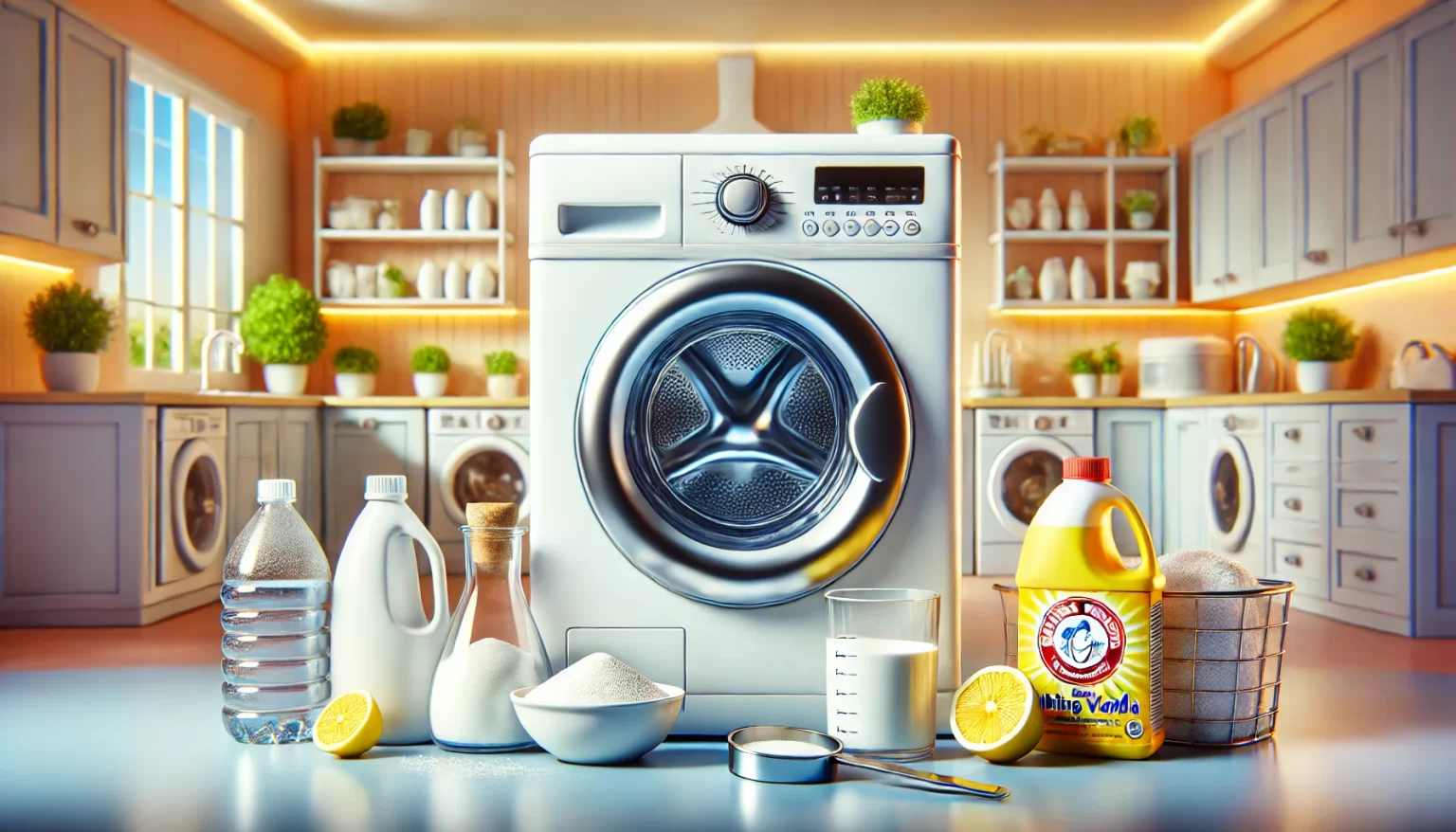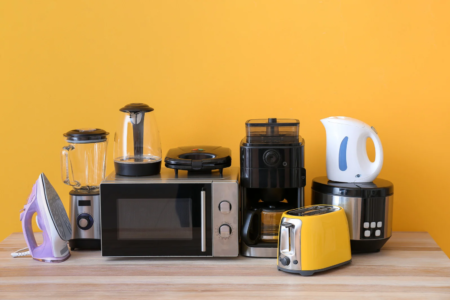Your washing machine works tirelessly to keep your clothes clean, but who’s keeping it clean? Often overlooked, the appliance that washes your clothes needs regular cleaning. Over time, detergent residue, fabric softener, and mineral deposits from hard water can build up inside your machine, leading to unpleasant odors, reduced efficiency, and even damage to your clothes.
The importance of cleaning your washing machine cannot be overstated. A dirty washing machine can harbor bacteria, mold, and mildew, which not only affect the cleanliness of your laundry but can also pose health risks. Common problems caused by residue buildup include musty smells in your clothes, decreased cleaning performance, and potential damage to the machine’s components.
While many commercial washing machine cleaners are available, natural cleaning methods offer several advantages. They’re cost-effective, environmentally friendly, and often just as effective as their chemical counterparts. In this guide, we’ll walk you through the process of making and using your own washing machine cleaner, ensuring your appliance stays in top condition for years to come.
Before Getting Started
Before cleaning, it’s crucial to check your washing machine’s owner’s manual or the manufacturer’s website. Different models may have specific cleaning recommendations or restrictions. This step is particularly important for newer or high-efficiency machines, which might require special care.
A word of caution: avoid using harsh acidic substances like bleach or commercial cleaning products not specifically designed for washing machines. These can damage the machine’s components and potentially void your warranty. Instead, we’ll focus on gentler, natural ingredients that are just as effective.
One of the star ingredients in our homemade cleaner is white vinegar. Vinegar is a natural disinfectant and deodorizer, perfect for cleaning washing machines. Compared to harsh chemicals, it’s also much gentler on your machine and the environment. Plus, it’s incredibly cost-effective!
What You’ll Need?
Before we begin, let’s gather our supplies. You’ll need the following equipment and ingredients:
Equipment/Tools:
- Measuring cups
- Old rags
- Old toothbrush
- Spray bottle
Ingredients:
- White vinegar
- Baking soda
- Essential oils (optional, but they add a pleasant scent)
Now that we have everything ready, let’s dive into the cleaning process. We’ll cover methods for both top-loading and front-loading washing machines.
How to Clean a Top-Loading Washing Machine?
1. Run Vinegar Through the Washing Machine
Start by setting your washing machine to the largest load size and the hottest water temperature. Instead of adding detergent, pour 4 cups of white vinegar into the drum. Let the machine fill with hot water, then pause the cycle. Allow the vinegar solution to sit for about an hour. This gives the vinegar time to break down any soap scum, mineral deposits, and other buildup inside the machine.
2. Clean the Exterior While You Wait
While the vinegar is working its magic inside, take this opportunity to clean the exterior of your washing machine. Using an old rag dampened with vinegar or a natural cleaner, wipe down the outside of the machine, including the lid, sides, and control panel. This not only cleans but also disinfects the surfaces you touch frequently.
3. Scrub Out the Detergent Dispenser
Now, turn your attention to the detergent dispenser. This area can accumulate a lot of soap scum and mildew. Remove the tray if possible and use an old toothbrush to scrub all the nooks and crannies. If you can’t remove the tray, do your best to clean it in place. Rinse thoroughly with warm water.
4. Restart Your Washing Machine
After soaking the vinegar for an hour, restart your washing machine and let it complete the cycle. The combination of hot water and vinegar will help sanitize the machine and rinse away loosened grime and mineral deposits.
5. Choose Your Essential Oil (Optional)
If you’d like to add a pleasant scent to your washing machine, now’s the time to choose an essential oil. Lavender oil has calming properties and a fresh scent. Tea tree oil is known for its antibacterial properties. Lemon oil provides a clean, crisp scent. Choose based on your preference or the benefits you’re seeking.
6. Run a Cycle With Baking Soda
For the final cleaning step, add 1/2 cup of baking soda directly into the drum of the washing machine. If you’re using essential oils, add 5-10 drops at this point. Run another hot water cycle. The baking soda will help neutralize any remaining odors and remove lingering residue.
7. Air-Dry the Interior of the Washing Machine
Once the cycle is complete, open the lid to allow the interior to air dry completely. If you’re in a hurry, you can wipe it down with a clean, dry rag. Ensuring the machine is dry helps prevent mold and mildew growth.
How to Clean a Front-Loading Washing Machine?
Front-loading machines require a slightly different approach due to their design, but the principles remain the same.
1. Spray the Interior of the Washing Machine with Vinegar
Start by mixing equal parts water and white vinegar in a spray bottle. Thoroughly spray the inside of the drum, paying special attention to any visible soap scum or residue.
2. Clean the Rubber Gaskets
The rubber seal around the door of front-loading machines is notorious for trapping moisture and growing mold. Spray this area generously with your vinegar solution and wipe it down with a rag. Be sure to pull back the seal to clean underneath it gently.
3. Run a Vinegar Wash
Pour 2 cups of white vinegar into the detergent dispenser. Set the machine to the hottest and largest load setting and run a complete cycle.
4. Run Another Load With Baking Soda
Once the vinegar cycle is complete, add 1/2 cup of baking soda directly into the drum. If you’re using essential oils, add them now. Run another hot water cycle.
5. Clean the Exterior While You Wait
While the machine is running, wipe down the exterior with a rag dampened with vinegar or a natural cleaner. Don’t forget to clean the door, especially around the edges where grime can accumulate.
6. Make Sure the Interior Is Dry
After the final cycle, leave the door ajar to allow the interior to air dry completely. You can wipe it down with a dry cloth to speed up the process.
Conclusion
Regular cleaning of your washing machine is essential for maintaining efficiency and ensuring your clothes come out truly clean. By incorporating this natural cleaning method into your routine every few months, you can extend the life of your appliance and improve the quality of your laundry.
This homemade washing machine cleaner is effective, eco-friendly, and cost-efficient. Vinegar and baking soda combine to tackle tough buildup, eliminate odors, and leave your machine fresh and clean. Plus, you can customize the scent with your favorite essential oils.
Remember, a clean washing machine means cleaner clothes and a healthier home environment. Make this cleaning routine a regular part of your household maintenance, and you’ll enjoy the benefits of a well-functioning, odor-free washing machine for years to come.
By taking the time to care for your appliances, you’re making a smart investment in your home and your family’s well-being. So why not start today? Gather your supplies, set aside a little time, and give your hardworking washing machine the thorough cleaning it deserves. Your clothes (and your nose) will thank you!








